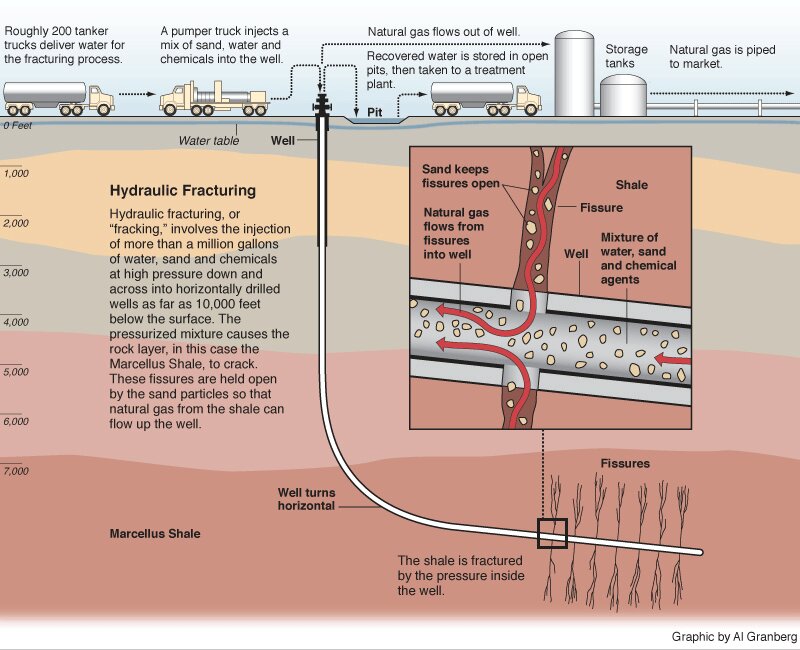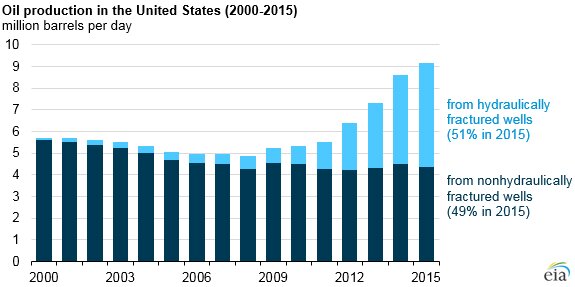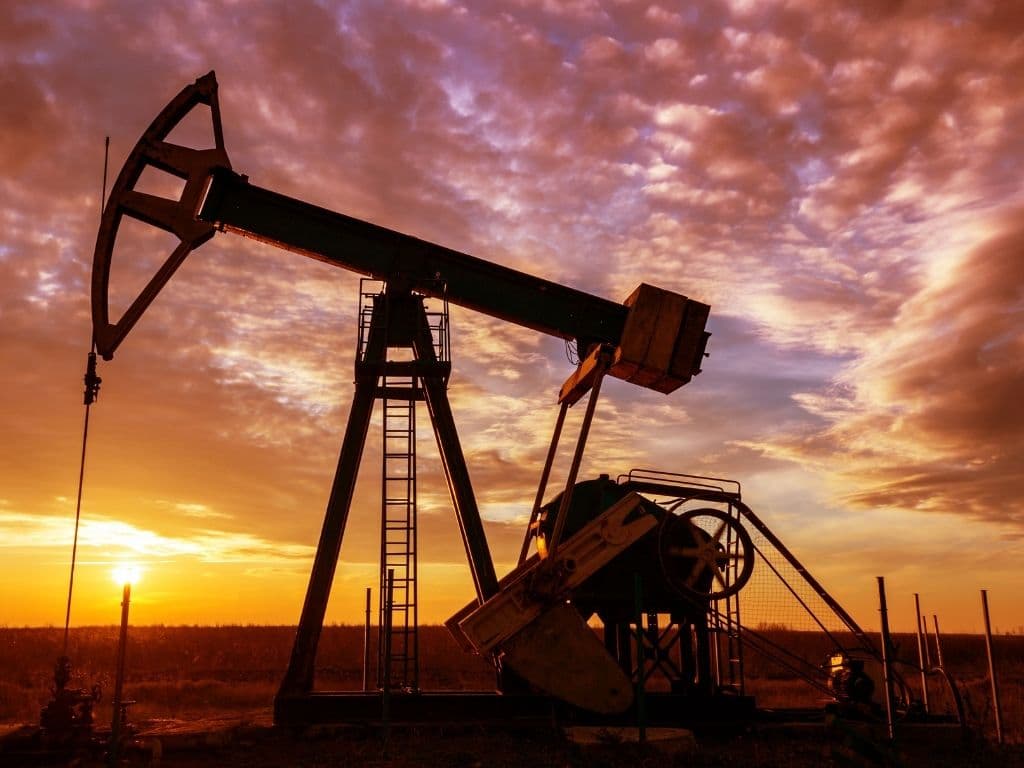When Joe Biden was elected President of the United States, it seemed that America was ready to leave oil and gas behind to embark on a green transition ahead of its goal of reaching carbon neutrality by 2050. Among his pledges to enact sweeping new climate legislation and end the country’s dependence on fossil fuels, Biden announced a fracking ban on federal land. Little did he know that an unforeseen invasion of Ukraine would spark a global energy crisis. As the world faces oil and gas shortages and western governments scramble for alternative suppliers, the White House is taking a big step back on the fracking ban.
—
What is Fracking?
Fracking is a highly controversial drilling technique used to extract oil and natural gas from deep underground. It involves the injection of “fracking fluid” – a mixture of water, sand, and other chemicals – into the ground. The high pressure at which the liquid is injected is powerful enough to fracture the surrounding rocks, creating fissures and cracks through which gas and oil escape.

Figure 1: The Fracking Process
Oil and gas-rich countries began experimenting with fracking in the late 1940s. However, it was only about 50 years later that horizontal drilling – the most common fracking technology – became widespread. At the same time, issues concerning the safety of this method arose. These quickly turned into a very heated environmental and political debate that still sees governments split on this topic today. Indeed, while fracking made it possible to extract and burn much more oil and natural gas by squeezing almost every last drop of fossil fuels out of the ground, questions about its detrimental effects on the environment make for an extremely controversial issue.
The technique is associated primarily with groundwater pollution and methane emissions. Once oil and gas make their way through the cracks, they are pumped back to the surface along with millions of gallons of so-called “flowback” liquid, which contains heavy metals, radioactive material, hydrocarbons, and other toxic chemicals. The only ‘safe’ way to dispose of these leftover fluids is by injecting them back into the ground, as storing them on the surface would be much more problematic. Yet, despite being underground, fracking fluid can still contaminate water supplies through the migration of gas and toxins. This was the case in many US states such as Colorado, Ohio, and Wyoming. In Pennsylvania and New York, a study found “systematic evidence” for methane contamination in household drinking water. However, polluted water not only jeopardizes human health – as studies have found that even small levels of exposure can unleash serious diseases – but it has also been linked to livestock and family pet deaths as well as vegetation disruption across the country.
Fracking has been also tied to a rise in earthquakes, with Texas being the best example of this worrisome phenomenon. While tremors there used to be a very sporadic occurrence, that number went up into hundreds in recent years. In the first three months of 2022 alone, 59 events were recorded, putting the year on pace to set a fresh record and making West Texas the earthquake capital of America. The link between increase in seismic activity and drilling is quite obvious among experts: as large quantities of liquid are pumped in and out of the ground, huge stress is put on the Earth’s fault lines.
You might also like: Global Coal Production Capacity Rose in 2021
Fracking in the US
While the US was one of the first countries in the world to begin experimenting with hydraulic fracking after the Second World War, it was during the Obama presidency that the technology really took off. During his time in office, the president focussed on reducing the country’s dependency on foreign oil as a strategy to increase economic growth and reduce economic vulnerability. Consequently, US crude oil boomed and production increased by a staggering 80%.
According to the Department of Energy (DOE), at least 2 million oil and gas rigs and up to 95% of all new wells by 2013 – accounting for more than 43% of total US oil and 67% of natural gas production – had been hydraulically fractured. During the heady days of the fracking boom, Obama also lifted a ban on US companies exporting oil and gas that had been in place since 1975, leading to an unprecedented rise in fossil fuel generation. Today, the US is the world’s largest producer and the second-largest exporter of gas, even though it is on track to become the leading country for liquified natural gas (LNG) exports in 2022.

Figure 2: Oil Production from Hydraulically and Nonhydraulically Fractures Wells in the US, 2000-2015
What Is the Biden Fracking Ban?
Biden was among the increasing number of global leaders coming up with plans to phase out fossil fuels in alignment with the 2015 Paris Agreement, and made the US green transition the focus of his presidential campaign. Shortly after his successful election, the US joined several nations around the world in the pledge to achieve carbon neutrality by 2050. In early 2021, Biden announced a plan that envisioned stronger energy efficiency standards, a curb on shale drilling, clean technology subsidies, and providing trillions of dollars over ten years to fund clean energy infrastructure and critical technologies like green hydrogen.
However, as the world’s second larger emitter, the US needed more decisive steps to help deliver global emission reductions. Just weeks after taking office, Biden vowed to ban fracking and drilling on federal land and water areas. Yet, it was later announced that the ban would not affect existing leases, many of which were assigned just months before as drilling companies stocked up on them in the event Donald Trump lost the election. Despite not being the complete ban on fracking that Biden promised throughout his campaign, the new law was still seen by many as a crucial move, given that fossil fuel development on federal land accounts for nearly 25% of the country’s total greenhouse gas emissions.
But just over a year into Biden’s presidency and right when the US seemed on path to phase out fossil fuels once and for all, the unexpected war in Ukraine placed all hopes on hold. Russia’s invasion of the European country sparked an unprecedented global energy crisis, deepening fears of worldwide oil and gas shortages. And as western nations scramble for new suppliers, America found a new position as a leading fossil fuel producer and provider.
Just weeks into the conflict, EU Commission head Ursula von der Leyen struck a deal with Biden, with the US pledging to supply American LNG to the European Union “until at least” 2030, as the latter aims to completely cut ties with Russian gas as fast as possible. The agreement scrapped the plans of halting new oil and gas extraction on public lands. Rather, it did the exact opposite, calling for more drilling and the release of oil from the government’s emergency stockpiles to help cut rising gas prices. In fact, in late April 2022, the White House announced it was opening up public land for drilling – nearly 144,000 acres – to new oil and gas leases, just months after suspending them. While Biden’s promise to ship more LNG to Europe may abate the energy price crisis and contribute to softening the rising costs, it is also extremely likely to hamper the transition to renewable resources. Some experts even argue that the new LNG infrastructure needed to meet the EU’s import demand would embed fossil fuel in the economy for decades. In a bid to justify the decision of opening up more land for drilling, the US released a report that shows the country is on course to produce enough renewable energy to power about 9.5 million homes by 2025. While this is certainly good news, we should not let this distract us from the fact that the Ukraine conflict is exposing the consequences that the US may face by having other countries rely so much on its fossil fuels.
EO’s Position: The current energy crisis may be hindering the current pace of global green transition and forcing countries to step up their fossil fuel production. However, there is no doubt that the only way the world will ever truly achieve energy independence is to phase out fossil fuels altogether. And while increasing oil and gas outputs in the US might be the easiest solution in the short term, the country needs to get to work now to accelerate the transition to renewables as this is its best and only sustainable long-term solution.


















